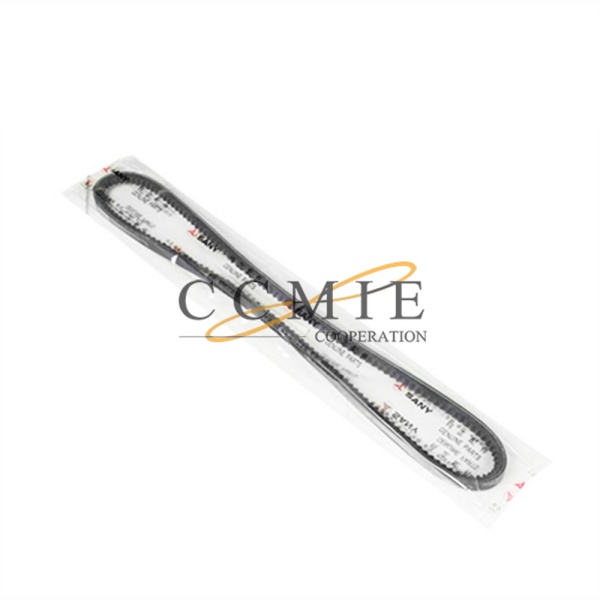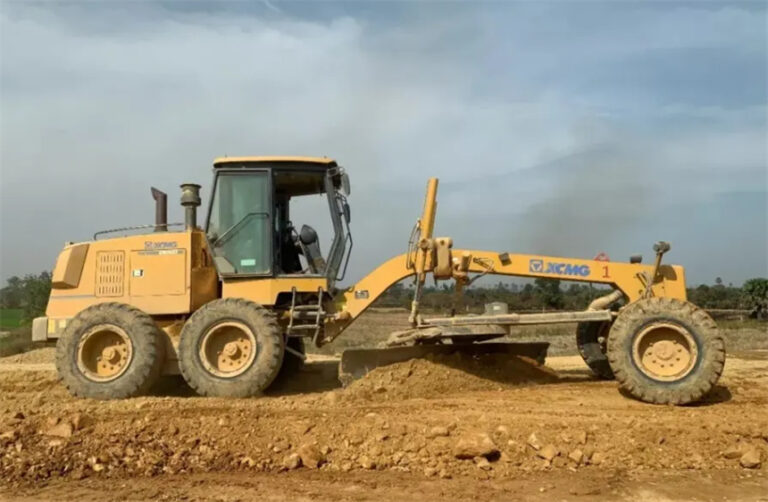What are the skills of crawler bulldozer operation?

What are the skills of crawler bulldozer operation? Compared with tire-type bulldozers, crawler-type bulldozers have better adhesion performance, can exert greater traction, and are more common. If a crawler bulldozer wants to work more lightly, it is necessary to master the screen and operation skills. The following is an introduction to the driving skills of the crawler bulldozer that you must master. Let’s take a look.
1. Speed change and advance and retreat
When shifting gears, first push the accelerator handle forward to the low-speed idling position, and then push the main clutch lever to the front to disengage the main clutch. Due to the action of the small brake in the main clutch, the power input shaft of the transmission stops rotating. . At this time, the shift lever can be moved to the required gear correctly, and then the forward and backward levers can be placed in the forward or reverse position (when the bulldozer is moving forward, the forward and backward levers are pulled back, and when the bulldozer is backward, push forward). After the gear is engaged, pull the throttle handle back to increase the engine speed, and connect the main clutch smoothly, and the bulldozer starts to drive.
When the bulldozer is running, the main clutch lever should be pulled to the rear, not in the semi-engaged position. Because the main clutch half-engagement will increase friction lining wear. Bulldozer transmissions generally have 5 forward gears and 4 reverse gears. The forward and backward levers can be used to change the direction of travel of the bulldozer. When the bulldozer is working, it should run at the highest speed as much as possible to improve the working efficiency. However, the driver should pay attention to whether the engine is running normally at any time, and should appropriately reduce the speed when the engine is overheated and the exhaust is emitting black smoke.
2. Turn
When the crawler bulldozer is turning, the steering clutch lever of the steering can be pulled back to separate the steering clutch, so the speed of the crawler on the corresponding side slows down, and the bulldozer starts to turn. To make the bulldozer make a sharp turn, in addition to disengaging the steering clutch, the corresponding brake pedal should also be depressed. Generally, sharp turns are only allowed when running in I gear. When the brakes are not in use, the foot should not be on the brake pedal, otherwise, it will cause the brake belt to wear and increase the fuel consumption.
When the bulldozer is turning, step on the brake pedal smoothly to avoid jumping when turning. After the turn, the brake pedal should be released first, and then the joystick should be released. If the turning radius is large, it is not necessary to depress the brake pedal. When it is not necessary, do not turn the bulldozer in place at high speed to avoid accidents caused by track derailment.
3. Ramp driving
Different types of bulldozers have different climbing abilities (usually 30°), and the slopes and terrains that bulldozers of the same structure can adapt to are also different. The driver should be familiar with the climbing limits of the model used to avoid landslides due to insufficient uphill and downhill capabilities.
Before going uphill, you should choose a suitable speed gear according to the terrain, the size and the length of the slope, and it is not allowed to change gears in the middle of climbing. When going uphill, the bulldozer should run at a vertical angle to the lateral side of the hillside, and lateral driving is not allowed on steep slopes. The shovel blade can be lowered properly so as not to affect the line of sight, and in the event of a landslide, the shovel can quickly hit the ground to help the bulldozer brake.
If the engine stalls on the way uphill, stop the fuel supply immediately, put down the blade and brake urgently. When you cannot stop on a slope, you should change to reverse gear and slowly slide to the bottom of the slope (slip while braking) before starting. If you do not stop the fuel supply and slide down in the forward gear, it will cause a reverse fire due to the reverse transmission of power to the engine, causing the air filter to spray fuel outwards. In the event of a reverse reversal fire, the accelerator should be quickly closed and the bulldozer should be braked. Before restarting, check that the gear lever is in neutral.
When the bulldozer is going downhill, use a low-speed gear with a small accelerator and use the brake pedal.
4. Passing cliffs or rocky beaches
When the bulldozer needs to pass obstacles such as large earth bags or cliffs, it should drive up slowly at a low speed. When reaching the point where the fuselage is about to tilt forward, the clutch should be quickly disengaged, so that the front of the bulldozer slowly touches the ground, and then the clutch should be engaged to continue moving forward. Do not drive diagonally over obstacles, and do not pull the steering lever when driving over obstacles.
When passing the rocky beach, you must choose a route in advance, drive all the way, turn as little as possible on the way, and should drive at low speed and with a small accelerator.
I believe that through this article, everyone can drive the crawler bulldozer better. If you need to buy bulldozers or spare parts for bulldozers, you can contact us. If you have other types of construction machinery spare parts needs, you can also contact us.






